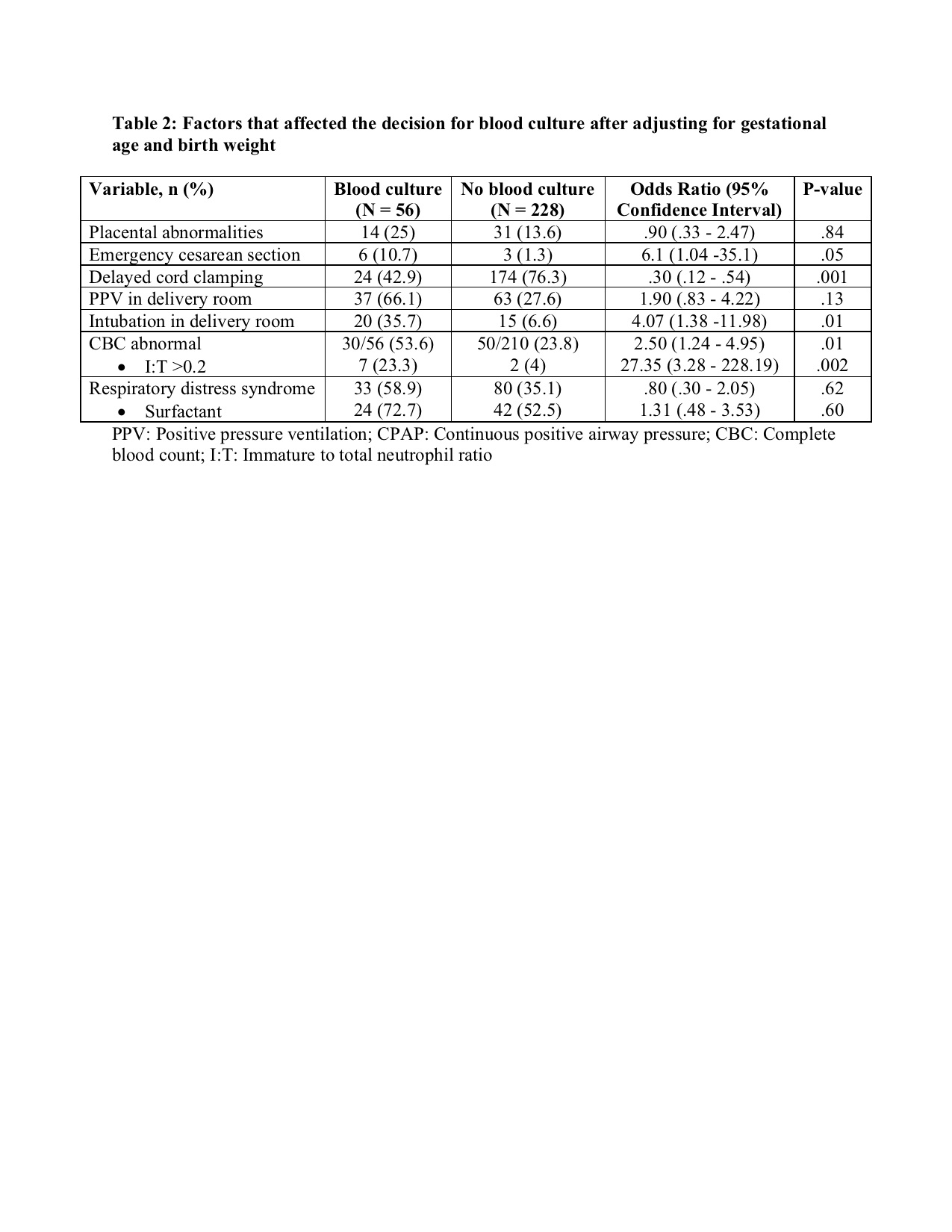Neonatal Infectious Diseases/Immunology
Category: Abstract Submission
Neonatal Infectious Diseases/Immunology: Potpourri
567 - Utility of Blood Cultures in Preterm Infants Born by Cesarean Section due to Non-infectious Maternal and/or Fetal Indications
Sunday, April 24, 2022
3:30 PM - 6:00 PM US MT
Poster Number: 567
Publication Number: 567.336
Publication Number: 567.336
Abigail A. Bourland, Texas A&M Health Science Center College of Medicine, Dallas, TX, United States; Kirtan Patel, Ann & Robert H. Lurie Children's Hospital of Chicago, Chicago, IL, United States; Sujata Desai, Baylor University Medical center, Dallas, TX, United States; Arpitha Chiruvolu, Baylor University Medical Center, Dallas, TX, United States

Abigail A. Bourland, BSA
Medical student
Texas A&M Health Science Center College of Medicine
Dallas, Texas, United States
Presenting Author(s)
Background: Preterm infants born < =34 weeks of gestation by cesarean section (CS) in the absence of labor or rupture of membranes (ROM) due to non-infectious maternal and/or fetal indications are at lowest risk for early onset sepsis (EOS). The current American Academy of Pediatrics Committee on Fetus and Newborn guidelines for managing these infants after delivery recommend no laboratory evaluation or empiric antibiotics, but include blood culture and clinical monitoring. However, the utility of blood cultures drawn soon after birth in this preterm population is a subject of debate.
Objective: The purpose of this study was to identify the factors influencing the decision to perform blood culture and their utility in infants at lowest risk for EOS. We hypothesized that because the risk of infection is negligible, blood cultures are not useful in the initial management of these preterm infants.
Design/Methods: In this retrospective cohort study, chart reviews were conducted of preterm infants born < =34 weeks of gestation in a Level IV Maternal Neonatal Care Facility between January 1, 2015 and December 31, 2018.
Results: During the study period, out of 1200 preterm infants born < =34 weeks of gestation, 284 (23.7%) were born by CS due to non-infectious maternal and/or fetal indications in the absence of labor or ROM. Blood culture was performed on 56 infants (19.7%) soon after birth. Empiric antibiotics were given to 25 (44.6%) of these infants. When compared to no blood culture group, the mean gestational age and birth weight were significantly lower in the blood culture group (Table 1). Utilizing logistic regression and correcting for gestational age and birth weight, the factors that influenced the decision to perform blood culture included no delayed cord clamping, intubation in the delivery room, and abnormal complete blood count, including immature to total neutrophil ratio >0.2 (Table 2). None of the blood cultures performed were positive.Conclusion(s): Premature infants born by CS due to non-infectious maternal and/or fetal indications in the absence of labor and ROM are at lowest risk for EOS. The utility of blood cultures performed soon after birth in these infants is negligible and unnecessarily predisposes these vulnerable infants to early antibiotics.
CV - Abigail BourlandCV - Abigail Bourland 2022.pdf
Table 2: Factors that affected the decision for blood culture after adjusting for gestational age and birth weight
Objective: The purpose of this study was to identify the factors influencing the decision to perform blood culture and their utility in infants at lowest risk for EOS. We hypothesized that because the risk of infection is negligible, blood cultures are not useful in the initial management of these preterm infants.
Design/Methods: In this retrospective cohort study, chart reviews were conducted of preterm infants born < =34 weeks of gestation in a Level IV Maternal Neonatal Care Facility between January 1, 2015 and December 31, 2018.
Results: During the study period, out of 1200 preterm infants born < =34 weeks of gestation, 284 (23.7%) were born by CS due to non-infectious maternal and/or fetal indications in the absence of labor or ROM. Blood culture was performed on 56 infants (19.7%) soon after birth. Empiric antibiotics were given to 25 (44.6%) of these infants. When compared to no blood culture group, the mean gestational age and birth weight were significantly lower in the blood culture group (Table 1). Utilizing logistic regression and correcting for gestational age and birth weight, the factors that influenced the decision to perform blood culture included no delayed cord clamping, intubation in the delivery room, and abnormal complete blood count, including immature to total neutrophil ratio >0.2 (Table 2). None of the blood cultures performed were positive.Conclusion(s): Premature infants born by CS due to non-infectious maternal and/or fetal indications in the absence of labor and ROM are at lowest risk for EOS. The utility of blood cultures performed soon after birth in these infants is negligible and unnecessarily predisposes these vulnerable infants to early antibiotics.
CV - Abigail BourlandCV - Abigail Bourland 2022.pdf
Table 2: Factors that affected the decision for blood culture after adjusting for gestational age and birth weight

